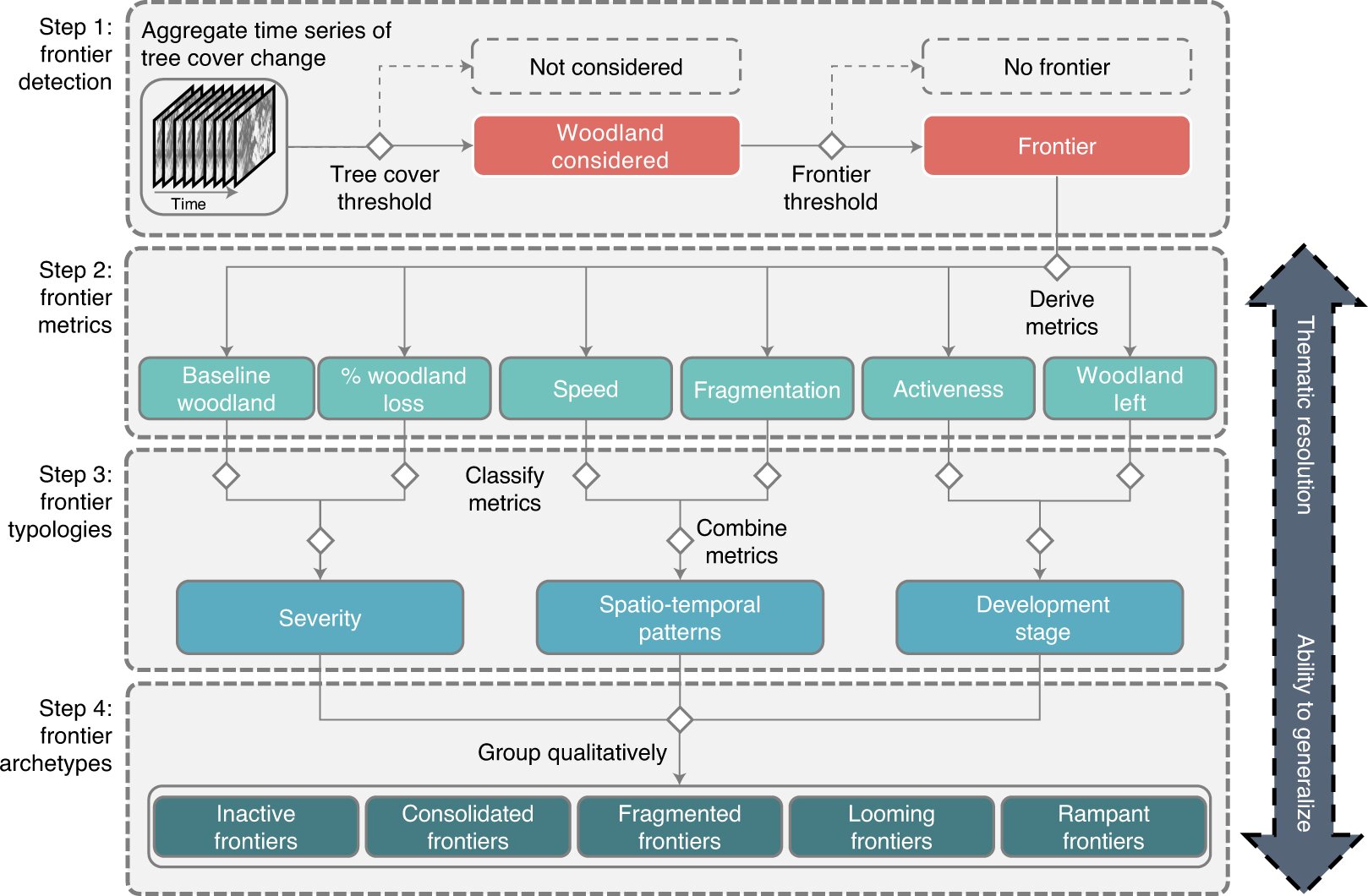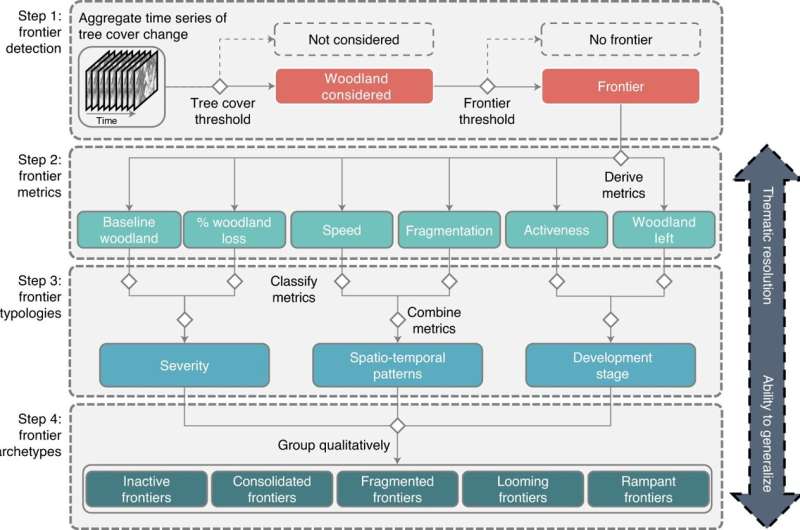

Dry tropical forests are important ecosystems, yet these forests are increasingly threatened, a new study discovers. An innovative approach to characterize how deforestation took place since 2000 showed that more than 71 million hectares of tropical dry forests were lost, particularly in South America and Asia. Even more worrisome, one third of remaining forests are under threat as they are located in so-called frontier areas where deforestation is progressing rapidly. African tropical dry forests are still comparatively less disturbed, but in many of them deforestation has recently emerged. Forward-looking monitoring and land-use planning is urgently needed to safeguard the world’s tropical dry forests.
In a new study published in Nature Sustainability, researchers from the Geography Department of Humboldt-Universität zu Berlin and the Earth and Life Institute of University Catholique de Louvain provide the most comprehensive global assessment of deforestation processes in the world’s dry forests and woodlands to date. Using high-resolution satellite imagery time series of forest loss for the period of 2000 to 2020, the team analyzed the spatial and temporal patterns of deforestation across more than 18 million square kilometers of tropical dry forests and woodlands. “The main innovation of our study is that we developed a methodology that goes beyond just flagging deforestation,” Tobias Kuemmerle, professor at the Geography Department of Humboldt-Universität explains. “In other words, we can now detect and map in detail where deforestation is speeding up and where it has slowed down, and whether it results in fragmented landscapes or whether forests are lost entirely.”
Hotspots of deforestation in South America and Asia
The results are alarming. Since 2000, more than 71 million hectares of dry forest have been destroyed, an area about twice the size of Germany. Many hotspots of deforestation are concentrated in South America, such as in the Gran Chaco in Argentina, Paraguay, and Bolivia, or the Cerrado in Brazil, as well as in Asia, such as the dry forests of Cambodia, Laos and Vietnam. “What is worrying is also that we found one third of all remaining dry forests to be located in areas where deforestation is already taking place,” Matthias Baumann, a co-author of the study, highlights, and adds: “We are going to lose many of these unique forests in the near future, if we do not better protect them.”
Much of the deforestation happens as capital-intensive agriculture spreads into dry forests. “Surprisingly, around 55% of the areas where deforestation frontiers recently emerged are located in African dry forests,” Patrick Meyfroidt, another co-author of the study, and highlights: “We can expect agricultural expansion to speed up there a lot in the future, because many global producers have an eye towards the region. If we want to safeguard Africa’s dry forests and savannas, the time to act is now.”
Dry forests equally threatened as rainforests
Deforestation in the tropics leads to major environmental and social problems, including biodiversity loss, carbon emissions, the spread of zoonotic diseases, or the marginalization of millions of local people that depend on these forests for their livelihoods. Unfortunately, the fate of dry forest and savannas is frequently overlooked by research, by policymakers and by the public. Ana Buchadas, researcher at the Geography Department of Humboldt-Universität zu Berlin says, “This is problematic because these ecosystems are really exceptional and equally threatened as rainforests in many parts of the world.”
Improved deforestation monitoring and better land-use and sustainability planning is needed, according to the authors. “Our work allowed us to identify re-occurring patterns of deforestation processes across different continents. This can be a good starting point for developing policy tools that are more adapted to local conditions,” Ana Buchadas says. According to the researchers, the results also are a huge opportunity to learn from one situation, for example policy interventions that have worked in South America, for other situations, such as where deforestation is starting like in Africa.
Advancing agriculture threatens the livelihoods of forest-dependent people
Ana Buchadas et al, Uncovering major types of deforestation frontiers across the world’s tropical dry woodlands, Nature Sustainability (2022). DOI: 10.1038/s41893-022-00886-9
Provided by
Humboldt-Universität zu Berlin
Citation:
Tropical dry forests disappearing rapidly around the globe (2022, May 9)
retrieved 9 May 2022
from https://phys.org/news/2022-05-tropical-forests-rapidly-globe.html
This document is subject to copyright. Apart from any fair dealing for the purpose of private study or research, no
part may be reproduced without the written permission. The content is provided for information purposes only.